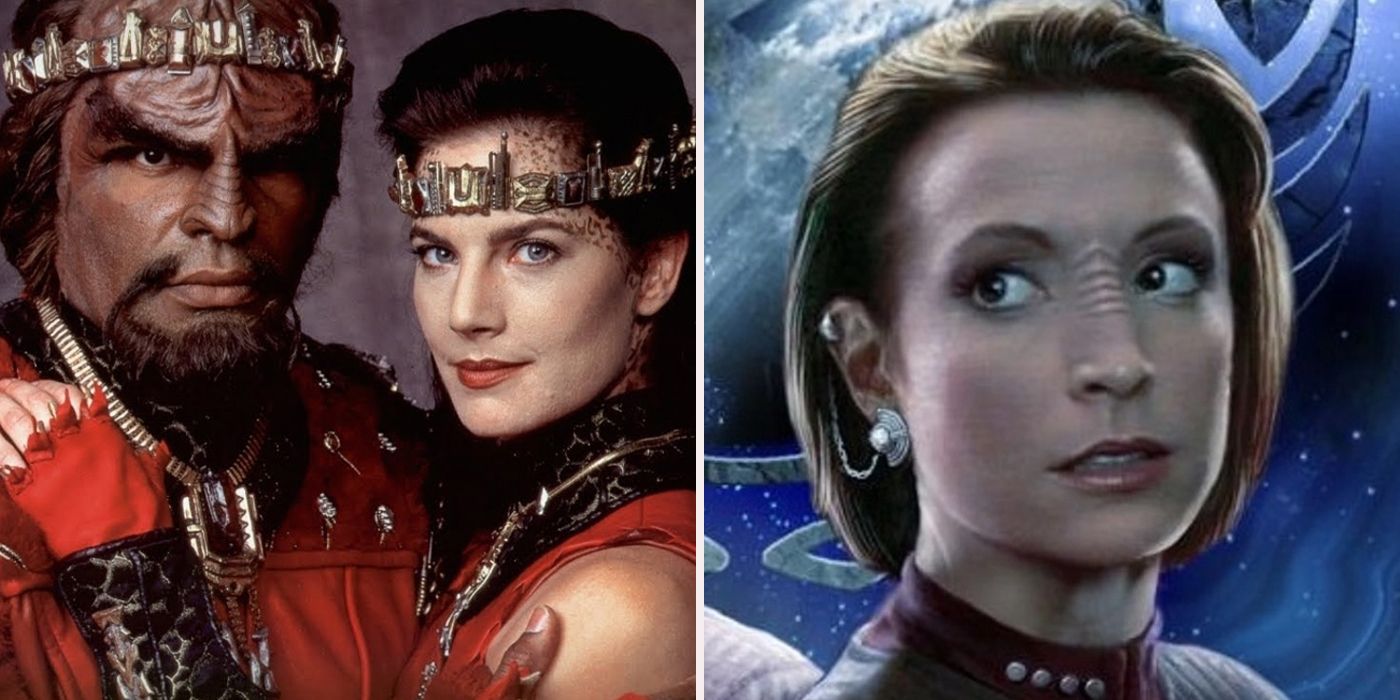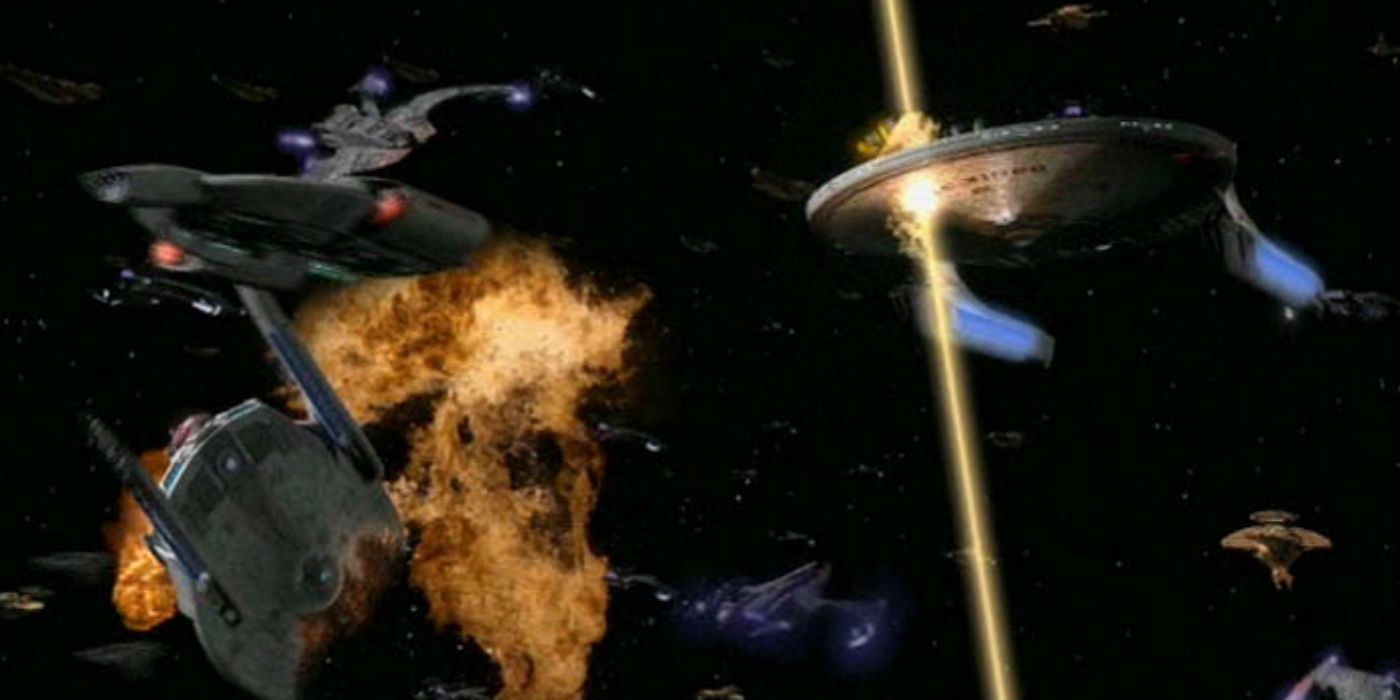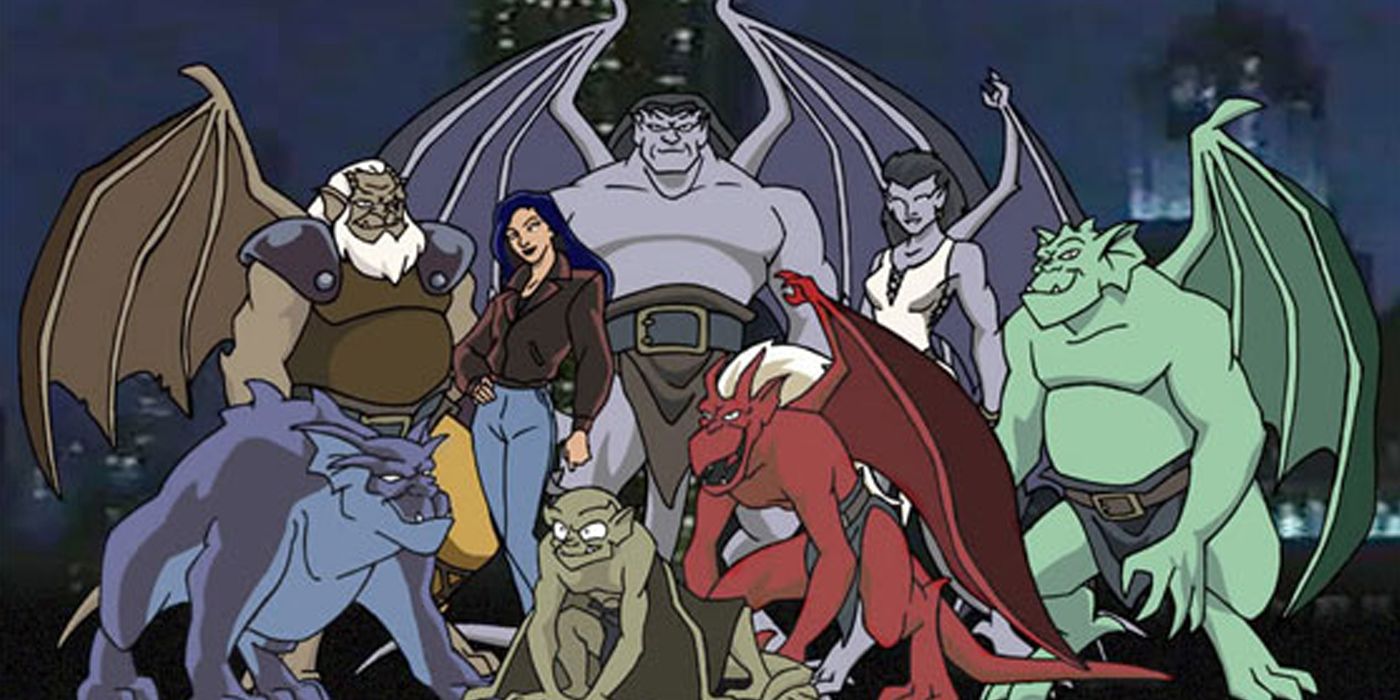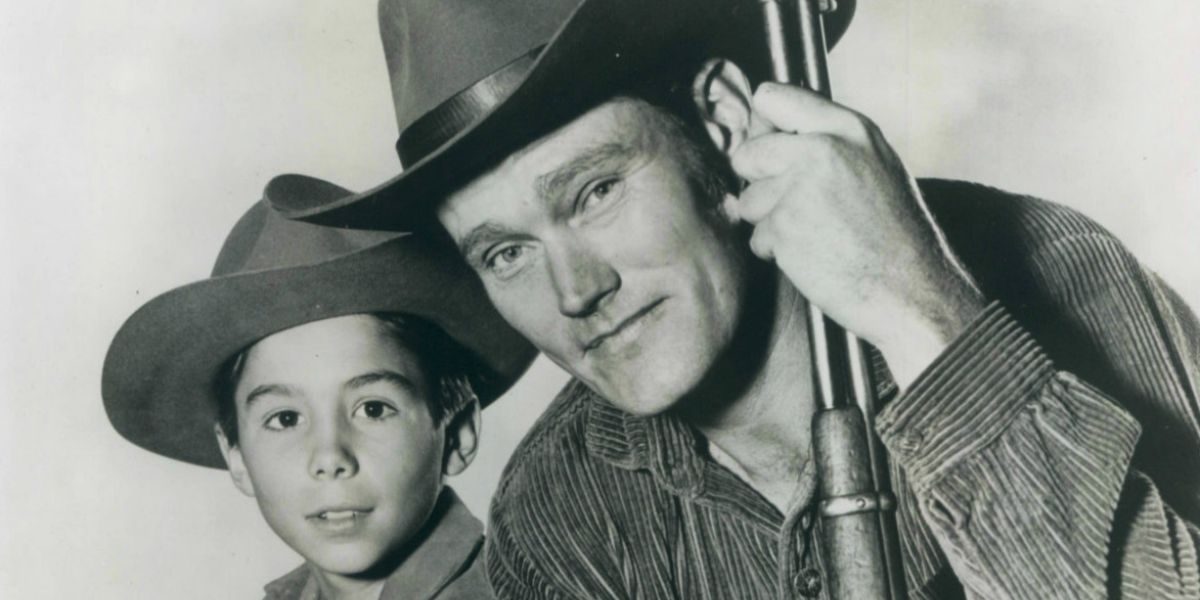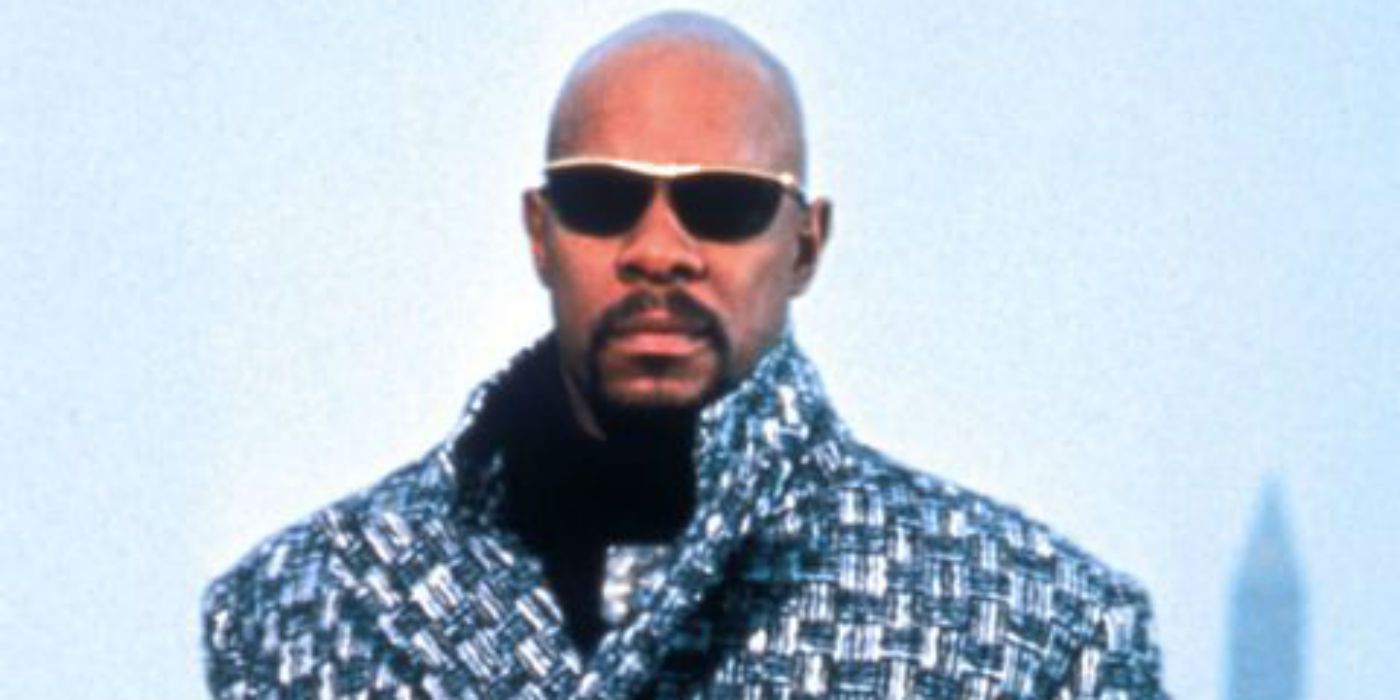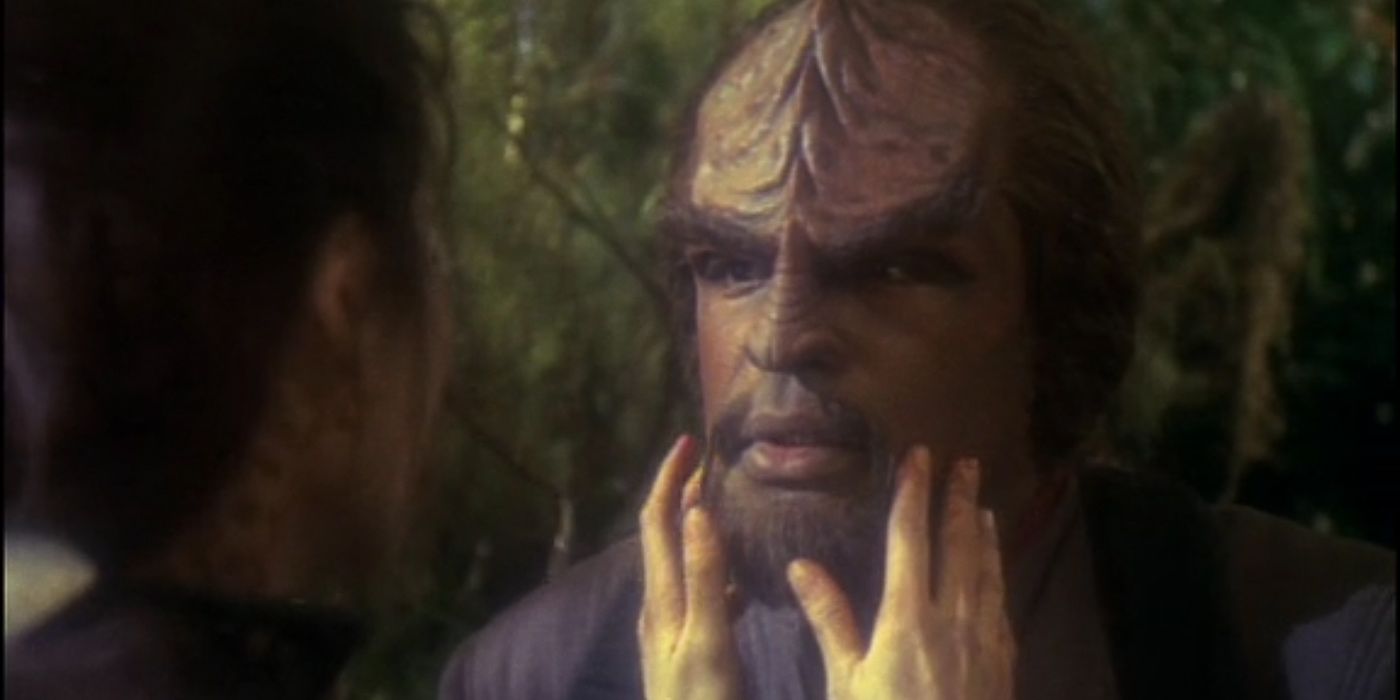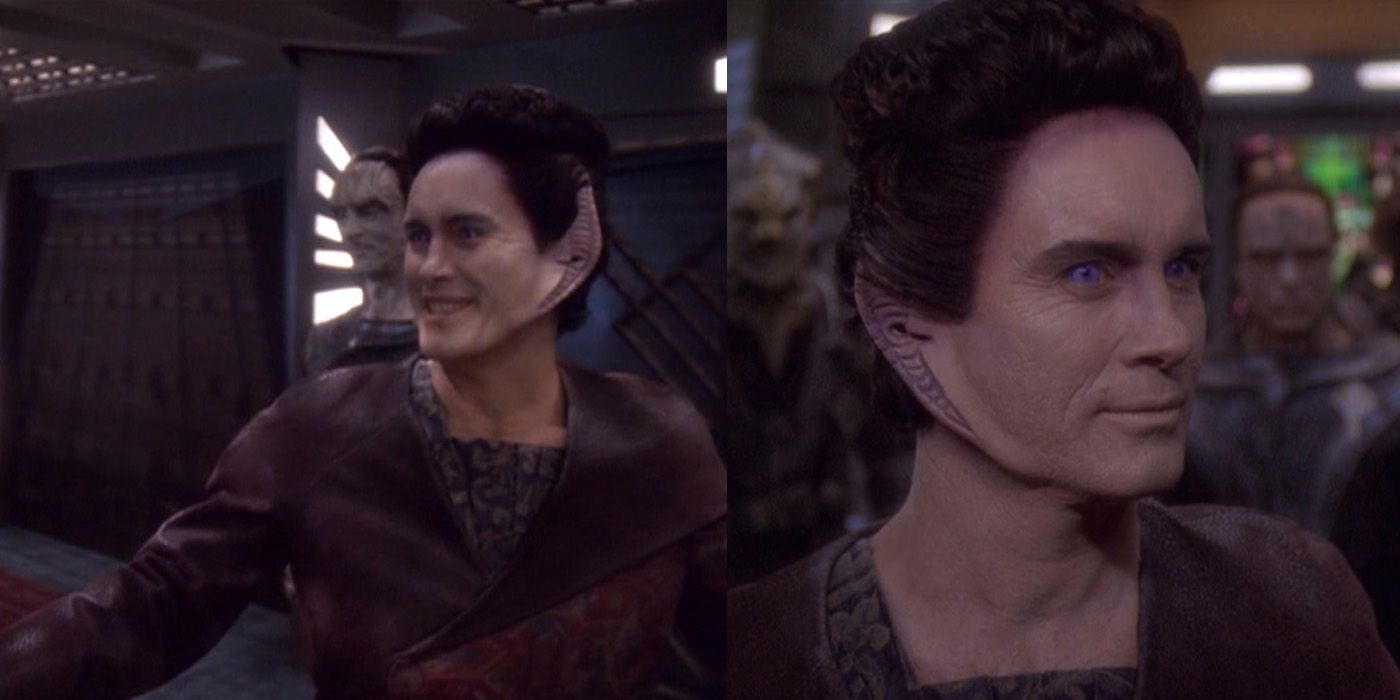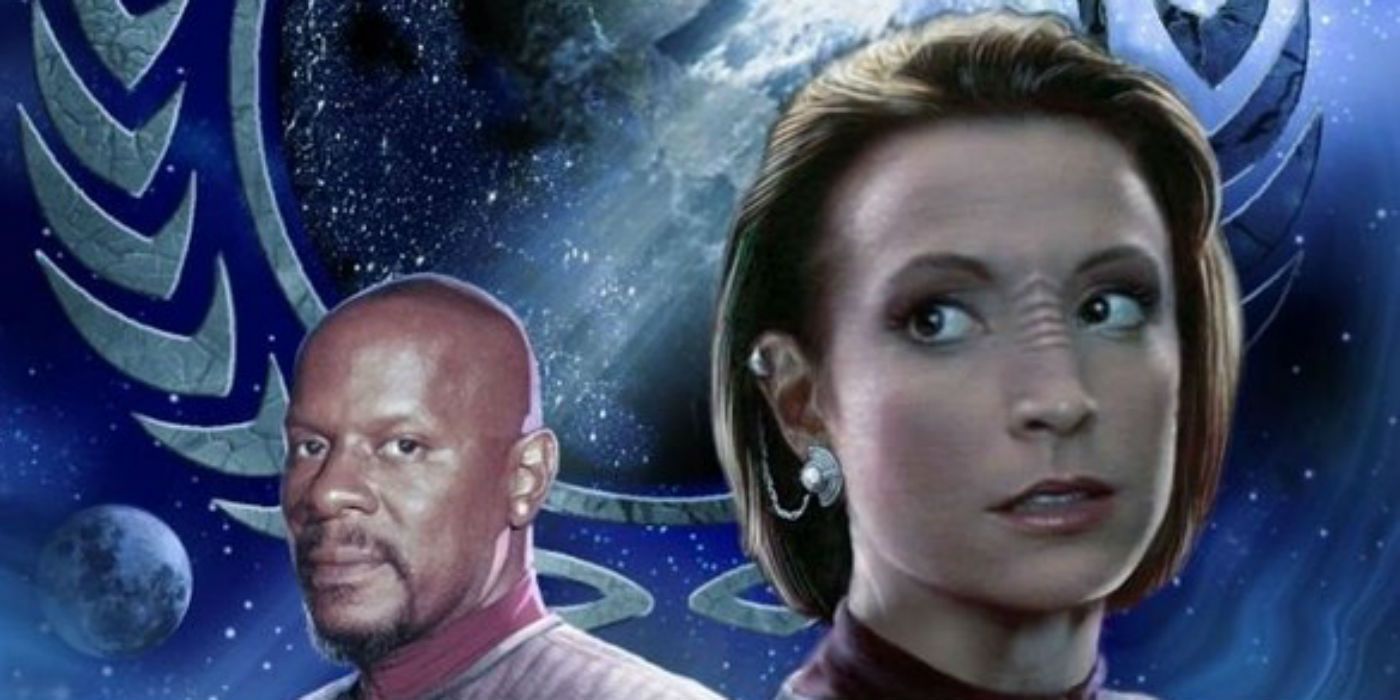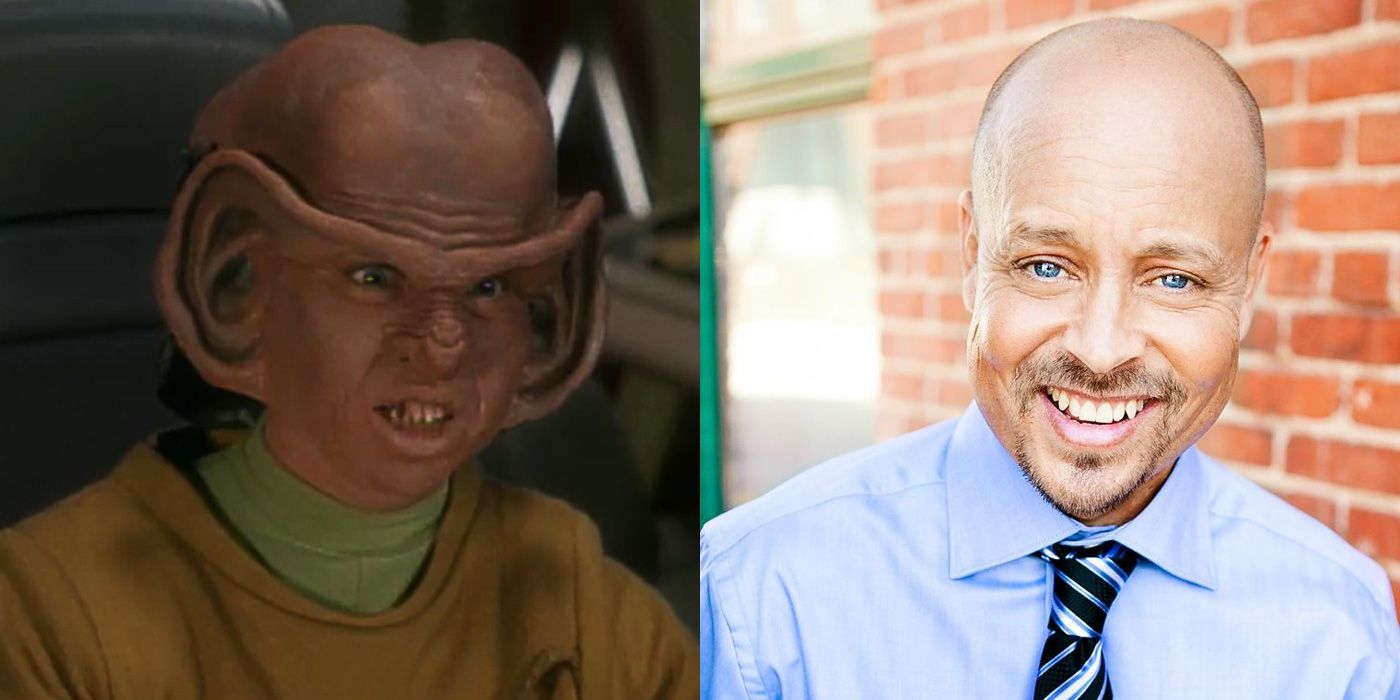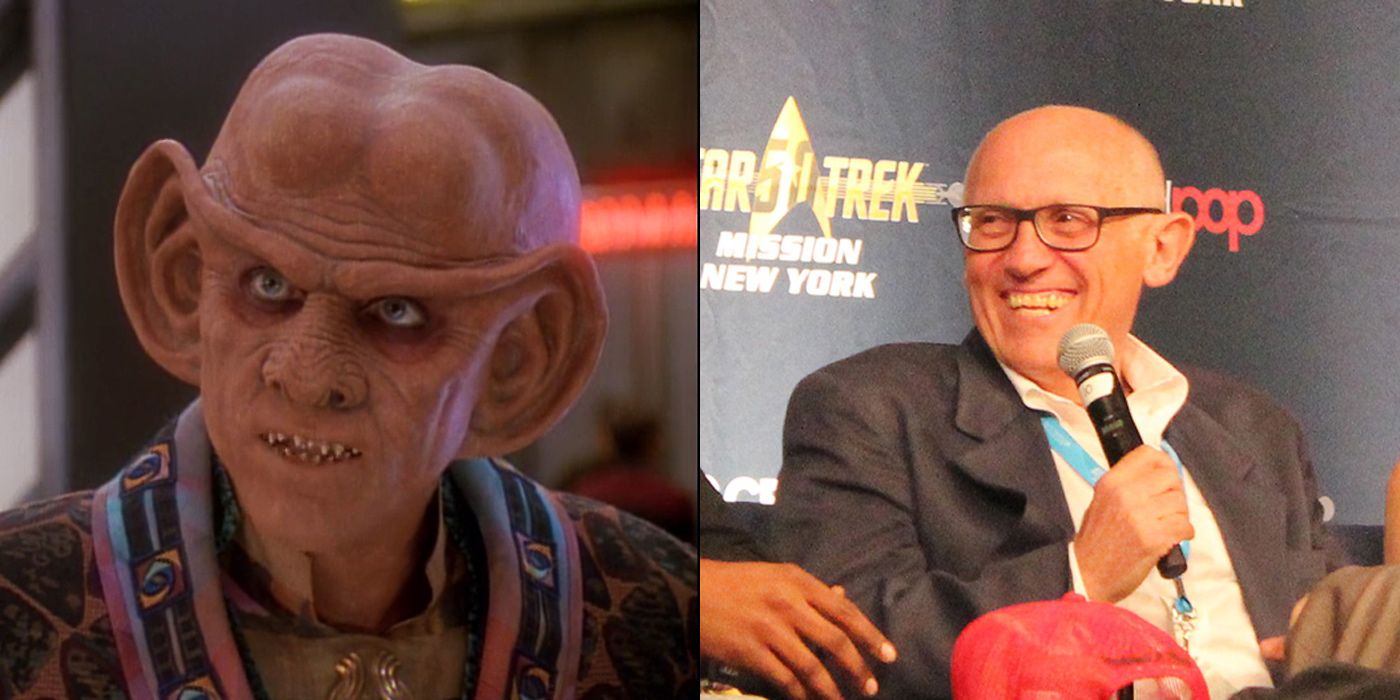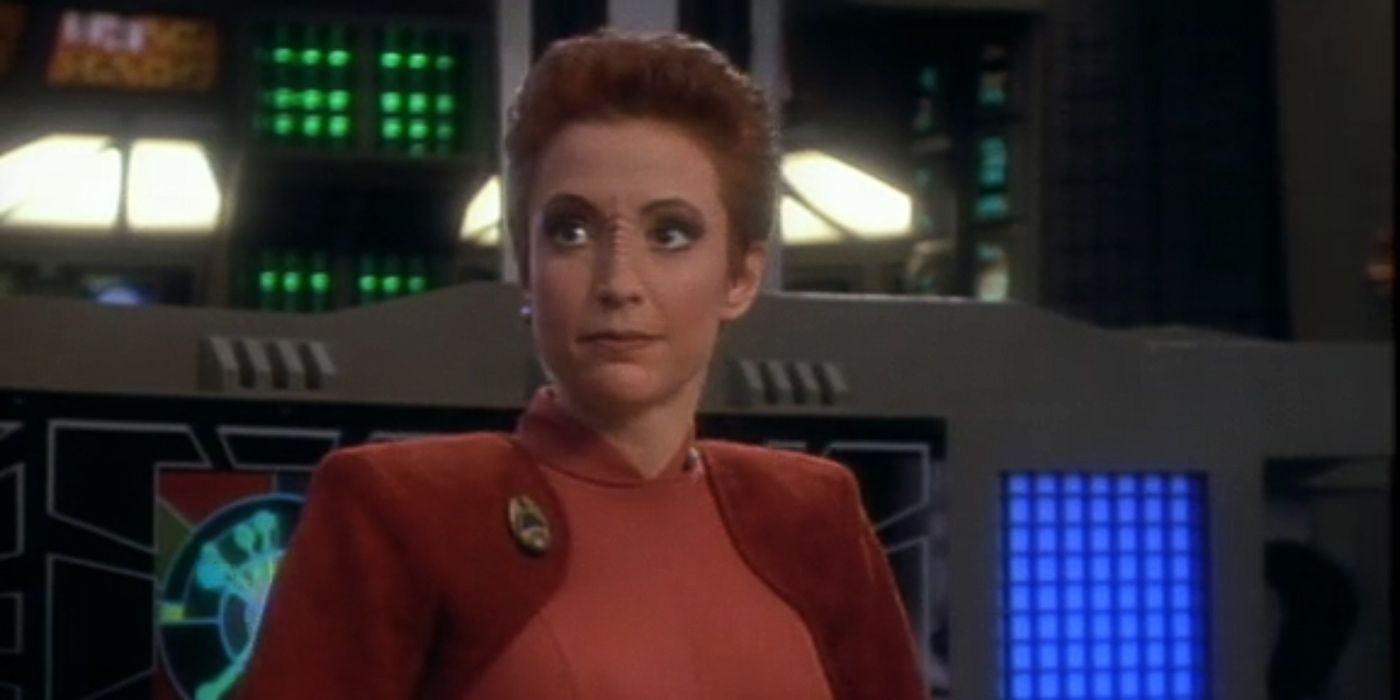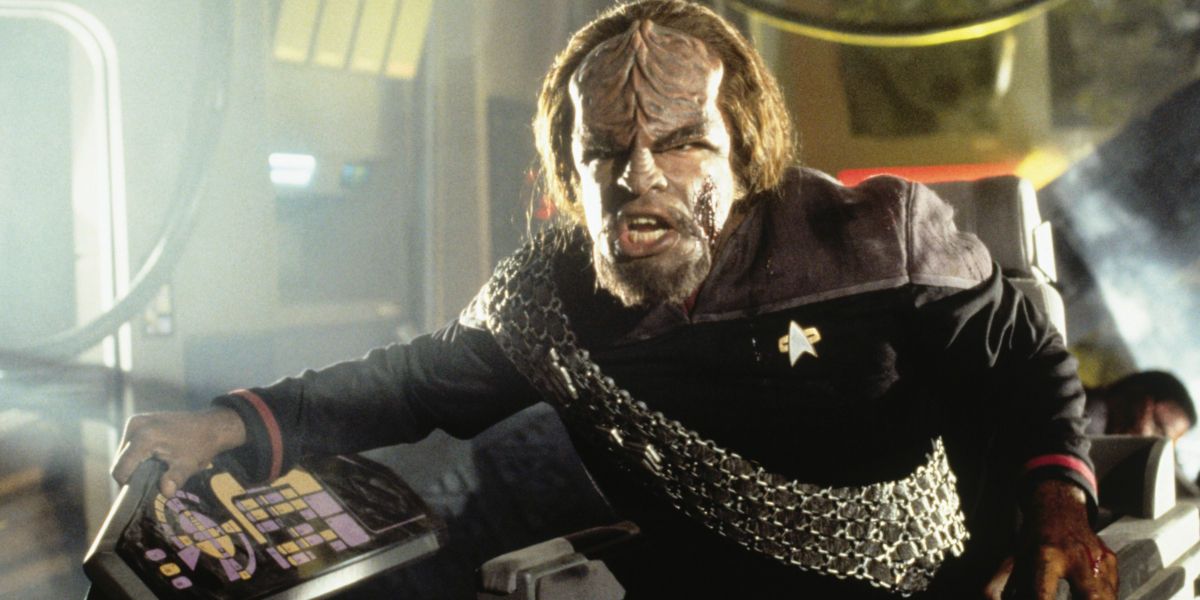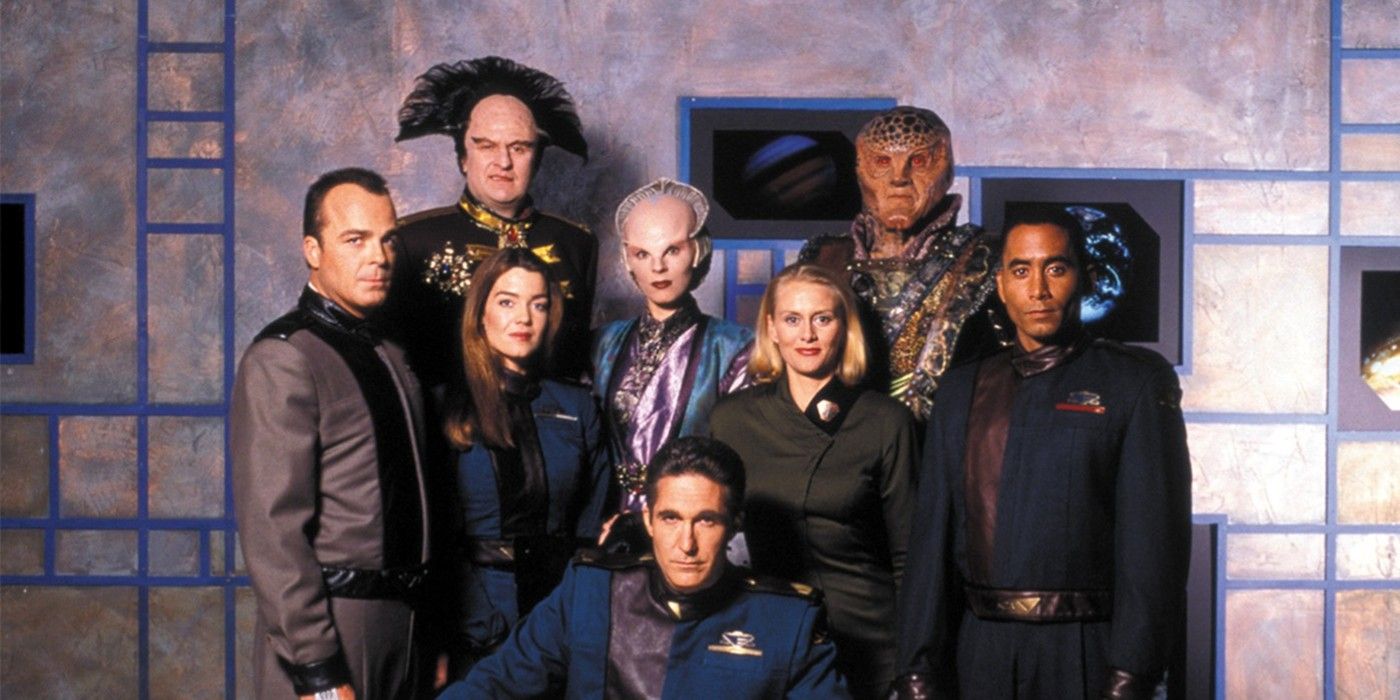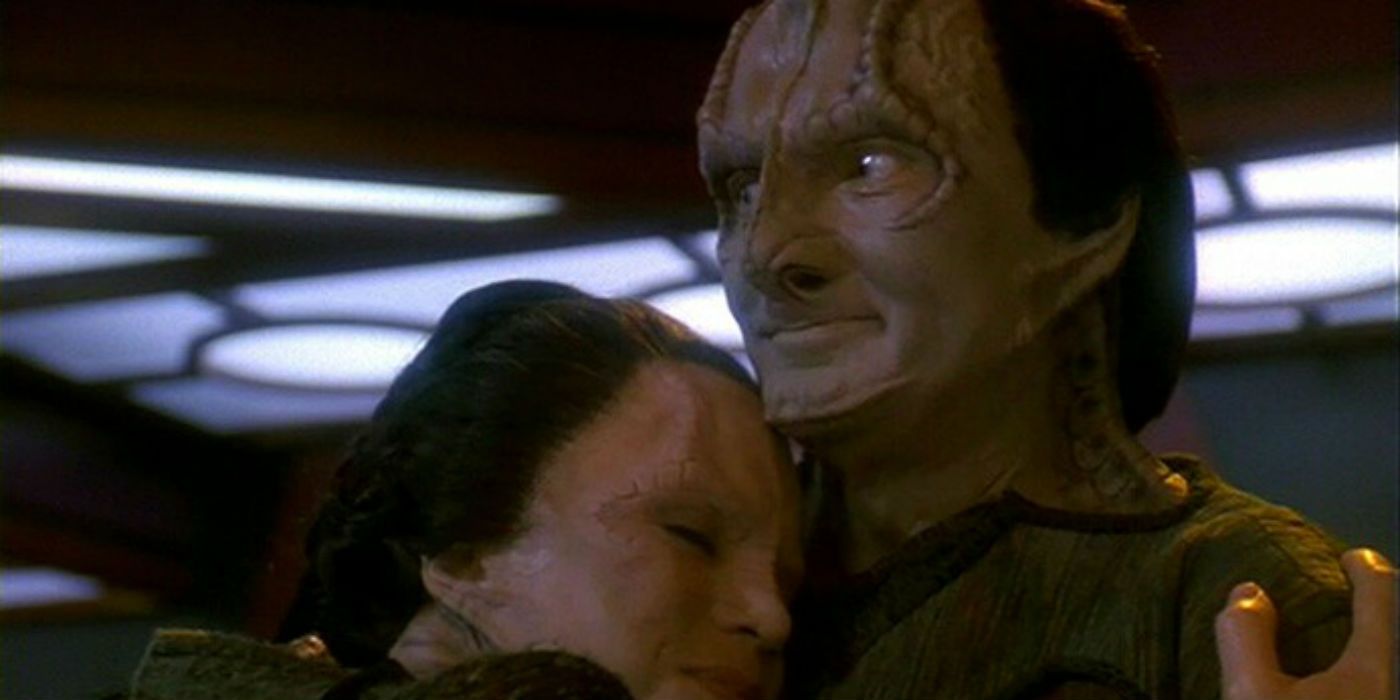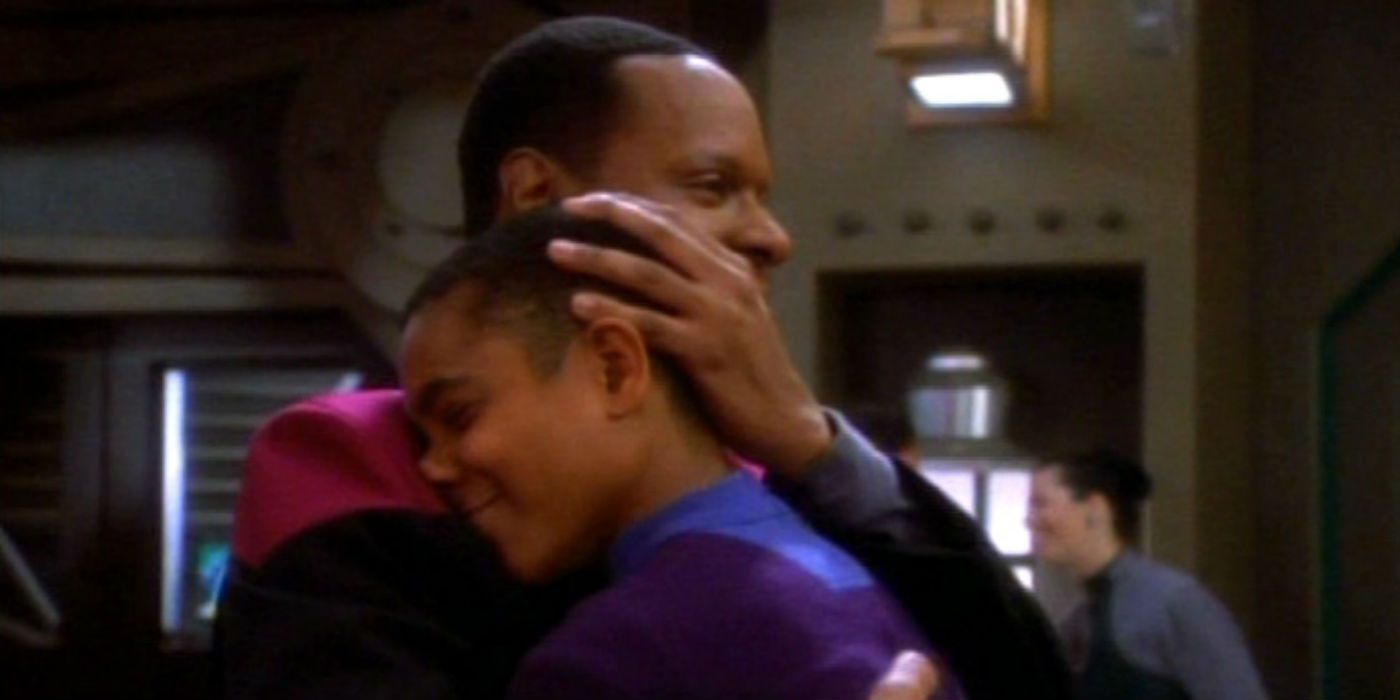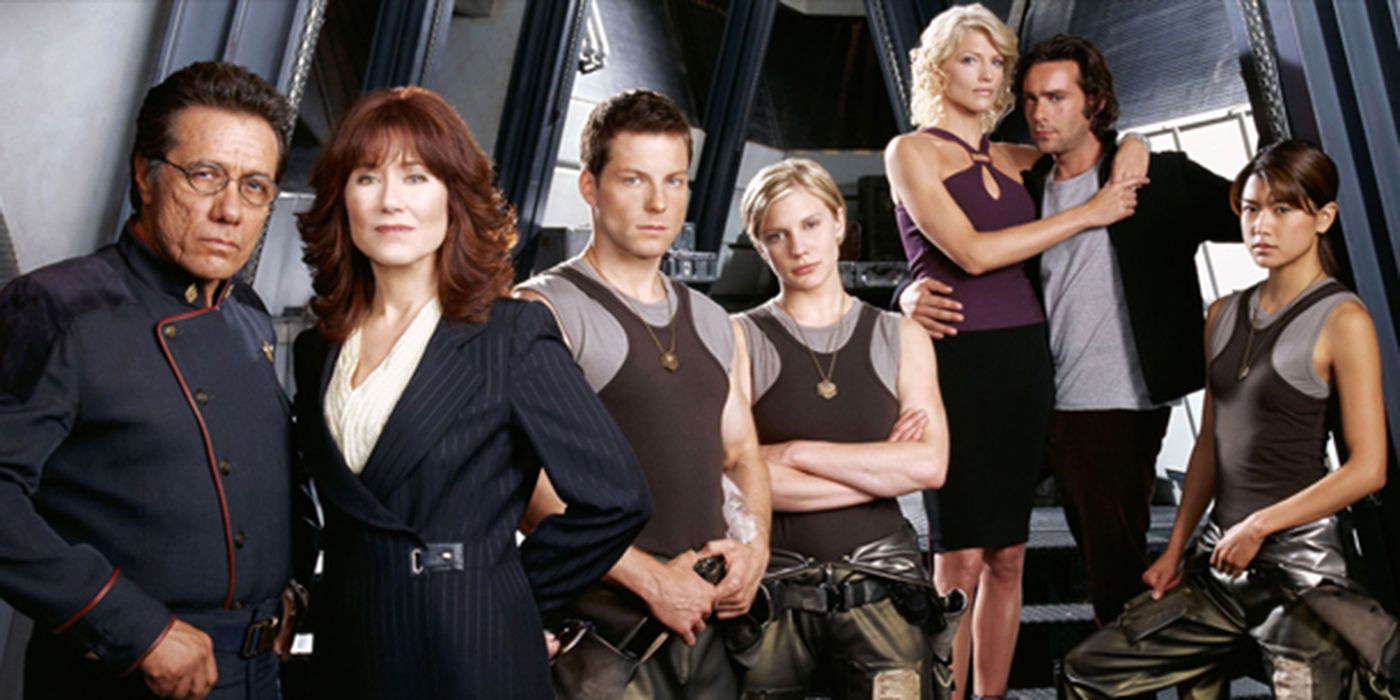Deep Space Nine has always been considered the “black sheep” of the Star Trek franchise, due to its serialized storytelling and darker themes. Where likes of the Original Series and The Next Generation offered a hopeful view of the future, Deep Space Nine showed the opposite side of the coin with its focus on politics and the cost of war.
Despite the inherent differences, it remains one of the most popular Star Trek series, not only because of the new story-ground that it broke, but also because of its heavy focus on well-developed and fleshed out characters.
Spanning seven seasons and tackling innumerable issues, DS9 continues to enthral old and new fans to this day, but did you know that its entire premise may be borrowed from another sci-fi show? Or, conversely, that a certain other sci-fi show may have borrowed from it? No?
Well, get ready to find out about that and much more with the 15 Things You Didn’t Know About Deep Space Nine.
15. The Dominion War Arc Was Meant To Be Much Shorter
When Deep Space Nine is compared to its fellow Star Trek series, its serialized storytelling sets it apart, leaving it unique amongst its family’s more episodic natures. Strangely enough, the entire impetus of the serialization, and the storyline that would take up the bulk of the narrative, was originally intended to last no more than a handful of episodes.
The series co-creator Rick Berman was concerned about the direction that producer Ronald D. Moore was taking the show, and didn’t want the seeds planted for the Dominion War to overly flourish.
Thankfully, as Berman became increasingly occupied with Star Trek: Voyager, Moore and fellow producer Ira Steven Behr were able to tell the story that they felt was necessary for the series and the characters.
It’s a blessing they did, or else we would have never got the all-time great episode “In The Pale Moonlight”, the layered characterizations for the cast, the spectacle and drama of a full-scale war and, most importantly, the hard-learned lessons that came with all of it.
14. Avery Brooks Played An Alien In Gargoyles
Avery Brooks, the man who brought Captain Benjamin Sisko to life in one of the most beloved geek series of all time, also found himself guest starring on the lesser-known, but no-less beloved Gargoyles-- Disney’s groundbreaking animated series.
The show follows the exploits of living Gargoyles, who are stone by day and warriors by night. After a spell is cast on them, they find themselves in modern day New York City, and protect it as they did their ancestral castle, centuries ago. As the series went on, some of the cast went on a lengthy journey across the globe, with one stop taking them to Brooks’ Nokkar.
Nokkar, who was the inspiration for the famous Easter Island stone heads, was an extraterrestrial sent to protect Earth from an alien threat. He mistook the Gargoyles as invaders and attempted to destroy them, but was dissuaded by Elisa Maza, eventually becoming an ally.
Brooks’ stint as Nokkar was far from the only Star Trek cast member to appear on Gargoyles, with the likes of Jonathan Frakes and Marina Sirtis having main roles, while others like Michael Dorn had guest spots.
13. Deep Space Nine Was Conceived As A Western
While Deep Space Nine is Star Trek through and through, with phasers, shuttles, the Federation, Klingons, and so on, its core is that of a Western.
Producers Brandon Tartikoff and Rick Berman wanted the series to be a deviation from the rest of its Star Trek kin, and looked to the 1958 Western The Rifleman for inspiration.
On the surface, it’s easy to see the comparisons: not unlike Sisko and Jake moving to the abandoned Deep Space station at the edge of the Wormhole, The Rifleman follows the tale of another widowed man and his son moving to a rickety town at the edge of the frontier, bringing law and order when they can.
Aside from this, Deep Space Nine, as a whole, follows the conventions of the Western genre, with familiar archetypes being updated for the time period. According to the creators, Odo is the ornery Sheriff, Quark is the tender of the local saloon, Kira is the Native American counterpart, Bashir is the county doctor, and Sisko reigns everyone in as mayor.
12. Brooks Wasn't Allowed To Shave His Head
Captain Sisko’s bearded chin and shaven head are a staple of Deep Space Nine, so much so that it’s easy to forget that he was clean-shaven with a full head of hair in the earlier seasons.
Avery Brooks wanted to be shaven from the start, but the directors were concerned that he would be far too comparable to his previous role of Hawk from the series Spenser: for Hire and A Man Called Hawk.
In Spencer, Brooks played a sunglasses-loving enforcer for hire with a strong code of ethics who occasionally worked with the main character, Spenser, a detective. The character was then carried over to his own series, where he morphed from an anti-hero to a generally respectable protagonist, and gained interests in the arts.
While the shows were certainly successful, it’s pretty odd that the DS9 directors felt audiences would be confused by Brooks’ bald-headedness , as if the major change in scenery wouldn’t be enough to clue the audience into the fact that an actor is capable of playing majorly different roles even if they have a similar look.
11. The Romance Between Dax And Worf Was Unplanned
Deep Space Nine’s focus on characters and consequences was an enormous change of pace from previous series. Since the action was generally situated on the titular station, this was critical to holding the audience’s interest.
While we saw many relationships bud across the span of the show, such as Julian and Garak’s mischievous friendship, or Quark and Odo’s bromance, none had the same fun and punch as Worf and Dax’s eventual coupling.
Oddly, no plot line of the sort was conceived beforehand. It wasn’t until the cast and crew noticed the excellent chemistry between the two characters that the thought was formulated and eventually executed successfully.
Worf’s ultra-serious demeanor was the perfect companion to Jadzia’s lighthearted personality (along with her unexpected love of Klingon opera) and their adventures together never failed to bring a smile to our faces.
Sure, while Odo and Kira’s eventual relationship ends up being an emotional crux for the show, we can’t help but give Worf and Jadzia the most love, no pun-intended.
10. Weyoun Has A Long History With Trek
Jeffrey Combs is a fantastic actor. In fact, he’s so fantastic that he’s played eight different characters on Star Trek, a few of which you likely didn’t recognize him as.
His most familiar role to fans of Deep Space Nine would be that of the devout Vorta, Weyoun, and multiple, cloned versions of the character. Secondly, he played the eternal thorn in Quark’s side, the Ferengi, Brunt. Going deeper in DS9, Combs has a stint as Tiron in the episode “Meridian,” and as Kevin Mulkahey in the exceptional “Far Beyond the Stars.”
Beyond Deep Space Nine, Combs appeared on the sister series, Voyager, as Penk in “Tsunkatse.” Finally, in the divisive Star Trek: Enterprise, Combs appeared as Krem and then the major recurring character, Thy’lek Shran , even getting the honor of appearing in the series’ final episode.
Combs’ Trek history goes back even further, as he auditioned for the role of William T. Riker. Despite not being cast, it was Frakes who gave Combs his first Deep Space Nine role as Tiron, which was the impetus for the deluge of subsequent roles.
9. Bajoran Money Is An Allusion
The Cardassian occupation of Bajor is the backbone of Deep Space Nine’s backstory, and a major plot point throughout the seasons.
When the Cardassians ruled Bajor, they did so with an iron fist. Genocide and slavery were the order of the day, even against a ferocious underground resistance.
Considering the plight of the Bajorans, it’s very easy to draw comparisons to real-world conflicts, such as World War II, which was the intention all along. Michael Piller is quoted as saying the Bajorans represented “any racially bound group of people who have been deprived of their own home by a powerful force.”
The symbolism even gets a little esoteric with the Bajoran currency, the “lita.” Fittingly, the lita is the real-world currency of Lithuania, a country which has been occupied by multiple hostile forces throughout history, such as the Soviet Union and Nazy Germany, both of which tried to destroy the Lithuanian culture and its people.
However, just like Bajor, Lithuania was able to regain its freedom and stood proud as the first Soviet republic to declare itself independent, an entire year before the collapse of the Soviet Union.
8. Nog Is Older Than You Think
Some of the best characters in Deep Space Nine are the scurrilous Ferengi. Always out for profit by any means under a smooth, seemingly classy exterior, these characters are a joy to see in action, and add quite a bit of much-needed humor in the shows darkest moments.
Then there’s Nog, the son of Rom, Quark’s brother. Starting out as Jake Sisko’s best friend (and a possible bad influence, according to Captain Sisko), Nog goes through an exceptional character arc through the series, transforming from dedicated swindler to the first Ferengi in Star Fleet.
When the series starts, Nog appears to be a child, but in actuality, he was 24 years old. This is because Aron Eisenberg, Nog’s actor, was born with a kidney condition that limited his growth to five feet. So, as the seasons rolled on, Jake continually looked older, while Nog remained relatively the same.
Despite this seeming setback, Aron has had plenty of roles aside from Nog, including a recurring character in the Nickelodeon classic The Secret World of Alex Mack. Better yet, despite being diagnosed with kidney failure in 2015, he was able to receive a transplant and is continuing to go strong.
7. Quark's Video Game Voice Work
What’s not to love about Quark? Sure, he follows the “Rules of Acquisition” to a tee, and often swindles customers and supposed friends alike, but he’s funny, charming and, whether he admits it or not, has got a good heart and soul under all that gold-pressed latinum.
The character was brought to life by the wonderful character actor Armin Shimerman, who infused so many emotions into Quark’s beady eyes and body language that you’d be hard-pressed to hate the Ferengi for too long.
Considering the general goofiness of Quark, it’s hard to imagine Shimerman playing the role of the dreadfully evil Andrew Ryan in the Bioshock games. In fact, this was such a shocker that the developers of the game claimed that no one would believe who voiced the character if they revealed it.
Shimerman has had other great roles in the video game world, too, such as Dr. Nefarious in a slew of Ratchet & Clank games, and even the Salarian Councilor in the Star Trek-like Mass Effect, along with other Star Trek alumni, including Dwight Schultz, the man who gave us the bumbling holo-antics of Reginald Barclay.
6. Kira's Pregnancy Was Real
In season 4, following an accident on one of Deep Space Nine’s shuttles, Dr. Bashir is forced to surgically remove the injured Keiko O’Brien’s fetus and place it into Kira in order to save the its life. Following this, Kira continued in her position on the station, carrying the O’Briens’ child and eventually gave birth to the healthy baby.
While this situation provided a relatively interesting subplot, it seemed to appear from nowhere. In fact, it sort of did, because the pregnancy was real and unexpected.
During production, Nana Visitor, Kira’s actress, became romantically involved with Alexander Siddig, the actor who played Julian Bashir. Eventually their off-the-set romance resulted in the pregnancy, and it was written into the story once the situation came to light.
After the baby, Django, was born, the two got married, only to divorce two years after the conclusion of the series.
5. Worf Was Added By Paramount
Worf is a favorite character from The Next Generation, and rightfully so. Alas, this poor Klingon never got the chance to flourish on the Enterprise, with most of his battle plans and strategies being ruined by Captain Picard.
Thankfully, Worf made the transition to Deep Space Nine, where he was turned loose and finally able to bash some skulls on a semi-regular basis. It was also on Deep Space Nine that the character got the chance to evolve and be deeply explored, even going as far as to get married.
It’s not out of the realm of possibly to say that Worf is even more loved for DS9 than TNG, which is ironic, since his entire inclusion was essentially a direct order from corporate in order to deal with the show’s flagging ratings.
While other plans were tossed around, the studio settled on bringing in Worf, which was a great challenge for the producers, considering they’d already planted seeds for a Klingon/Federation face-off.
It ended up working splendidly, though, as Worf became an intermediary between the Klingons and Federation, and fit in far more snugly than any of the creative team had imagined.
4. DS9 May Have Ripped Off Babylon 5
Both DS9 and Babylon 5 share eerie similarities that are not easily dismissed. In fact, things are so comparable that some believe that DS9 ripped B5 off, and there may be some truth to it.
Both shows feature space stations that border transportation devices and contain a marketplace and adult-themed entertainment. Both commanders suffer from the effects of war, and they both have female second-in-commands. This all seems fairly coincidental, until the actual production schedules come to light.
B5 was originally pitched to Paramount, who rejected it. Years later, B5 was picked up by Warner Bros. and both it and DS9 entered production.
B5’s creator J. Michael Straczynski speculated that, while DS9’s producers may not have known about B5’s pitch, there were perhaps guided by executives who were aware of the content, but considered it a coincidence.
However, after both shows were well into their runs, similarities continued to pop up between the two, causing Stracyznski to wonder if maybe things weren’t just a coincidence afterall.
While the truth may never be fully known, at least attempts were made to quell all the discontent by having Majel Barrett-Roddenberry appear on B5, while B5’s Billy Muny had a spot on DS9.
3. Garak Was Omnisexual
Elim Garak is not just a great Star Trek character, but one of the most interesting characters ever on television, period. You never quite knew where he stood, but his charming demeanor and humble claims of being a simple tailor endeared him to all who watched the series.
Andrew Robinson’s whimsical performance, mesmerizing grin, and unsettlingly wide eyes made for a wonderfully memorable character in a cast already filled with winners, and it was the actor’s interest in Garak that spawned many of his trademarks, particularly his much-debated sexuality.
The writers for DS9 had hoped to have a gay character in the series, but when the network intervened, they tried to work around it by having Garak’s relationship and interest in Julian Bashir be intentionally vague. More definitively, Robinson incorporated a repressed omnisexuality into the character, despite it never being referenced on screen.
Thankfully, in Andrew Robinson’s excellent Garak-centric book, A Stitch In Time, he was able to explore Elim’s omnisexuality, more-or-less making it canon, finally leaving yet another personal touch on the magnificent character.
2. Avery Brooks Aimed To Teach Lessons About Race
Brooks’ Benjamin Sisko was nuanced in a way that previous Captains were not, allowing us to truly feel as though we knew him. Among these traits was Sisko’s take on race, a byproduct of Avery Brook’s real-life views, and something he was able to take beyond the character and into the real world with powerful statements.
While other characters flock to a 1960s holo-program, Sisko refuses, displeased that it overlooks the discrimination present for its timeframe, believing that the truth about the past cannot be ignored, even in the post-racial Federation.
Likewise, Brooks was so passionate about the inspiring example of a black man in command of a station and starship that he even asked to have the ending of the series altered, not wanting to unintentionally incorporate racist undertones by having a black father stereotypically abandoning his family. Instead, the finale suggested that he would return someday.
However, Brooks’ greatest triumph was his direction in the '50s-set “Far Beyond the Stars”, with Sisko as a sci-fi writer whose story of a black starship captain is rejected due to race, which effectively calls out the hypocrisy of genre-television tropes from the platform of one of the most progressive franchises to ever exist.
1. The Producer Borrowed DS9 Elements For Battlestar Galactica
One of the greatest twists in DS9 was the revelation that Odo’s people--who he had long sought out-- not only existed but were the masters of the Dominion, whom the Federation was locked in interstellar war with.
Because they were Changelings, fear swept through the Federation that they would infiltrate the ranks of Star Fleet and its allies. Close friends could no longer be trusted, and tests were devised to uncover these hidden threats.
If any of that sounds like another sci-fi series about an interstellar war, you’re right on the money. Producer Ronald D. Moore was behind 2004’s Battlestar Galactica, and he incorporated the entire Changeling plot into the remake with minor changes.
Instead of shape-shifters, the crew of the Galactica needed to contend with a new breed of Cylon who appeared human, rather than mechanical. Much like in DS9, this threat brewed distrust and was the focus of major betrayals and twists.
While that’s the most major thematic crossover, other DS9 elements had a cozy place in the series, too, such as Kara Thrace’s name being inspired by Kira or the questioning of religion playing a major role.
---
Do you know any other interesting facts about Star Trek's Deep Space Nine? Let us know in the comment section!

